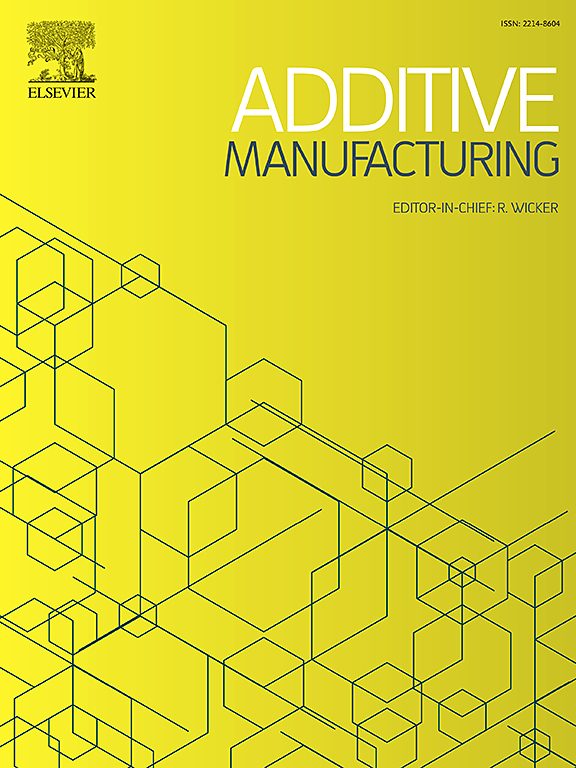Modeling and spatio-temporal optimization of grayscale digital light processing 3D-printed structures with photobleaching resins
IF 10.3
1区 工程技术
Q1 ENGINEERING, MANUFACTURING
引用次数: 0
Abstract
Grayscale digital light processing (DLP) 3D printing modulates light intensity in each pixel through grayscale values, offering a promising approach for achieving high-resolution printed structures. However, existing theoretical models and optimization methods typically rely on the assumuption of a photo-invariant resin, for simplification. This study demonstrates that the curing depth varies even when the total accumulated dose remains constant, indicating a photo-variant effect. To address this, a spatio-temporal optimization method along with a model are developed, incorporating photobleaching effects, multilayer exposure, and Gaussian beam propagation. The model accurately predicts variations in curing depths at constant doses. Structures are optimized using this model, resulting in several significant improvements: channel heights are reduced to approximately one-fifth of the empirical minimum value with variations below 10 %; concave lenses are optimized with smooth surfaces; and the stair-stepping effect is notably reduced. Additionally, an asymmetric stair-stepping effect is identified between the left and right sides of objects printed at the corner, primarily caused by light divergence. The developed model and spatio-temporal optimization algorithm pave the way for high-fidelity grayscale DLP 3D printing.
求助全文
约1分钟内获得全文
求助全文
来源期刊

Additive manufacturing
Materials Science-General Materials Science
CiteScore
19.80
自引率
12.70%
发文量
648
审稿时长
35 days
期刊介绍:
Additive Manufacturing stands as a peer-reviewed journal dedicated to delivering high-quality research papers and reviews in the field of additive manufacturing, serving both academia and industry leaders. The journal's objective is to recognize the innovative essence of additive manufacturing and its diverse applications, providing a comprehensive overview of current developments and future prospects.
The transformative potential of additive manufacturing technologies in product design and manufacturing is poised to disrupt traditional approaches. In response to this paradigm shift, a distinctive and comprehensive publication outlet was essential. Additive Manufacturing fulfills this need, offering a platform for engineers, materials scientists, and practitioners across academia and various industries to document and share innovations in these evolving technologies.
 求助内容:
求助内容: 应助结果提醒方式:
应助结果提醒方式:


